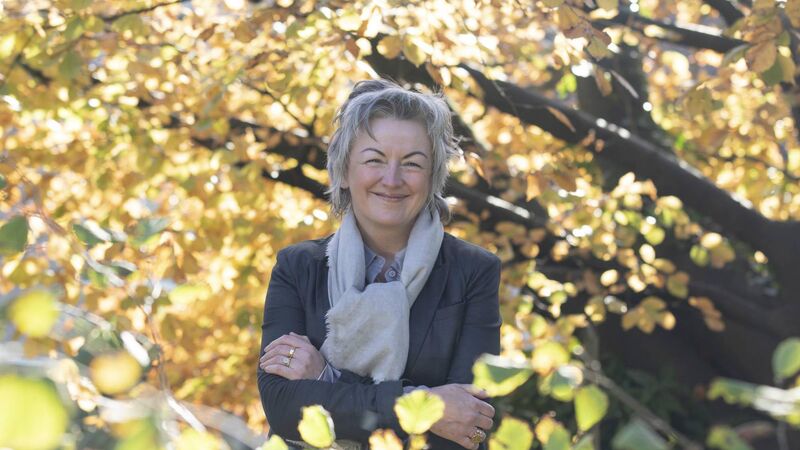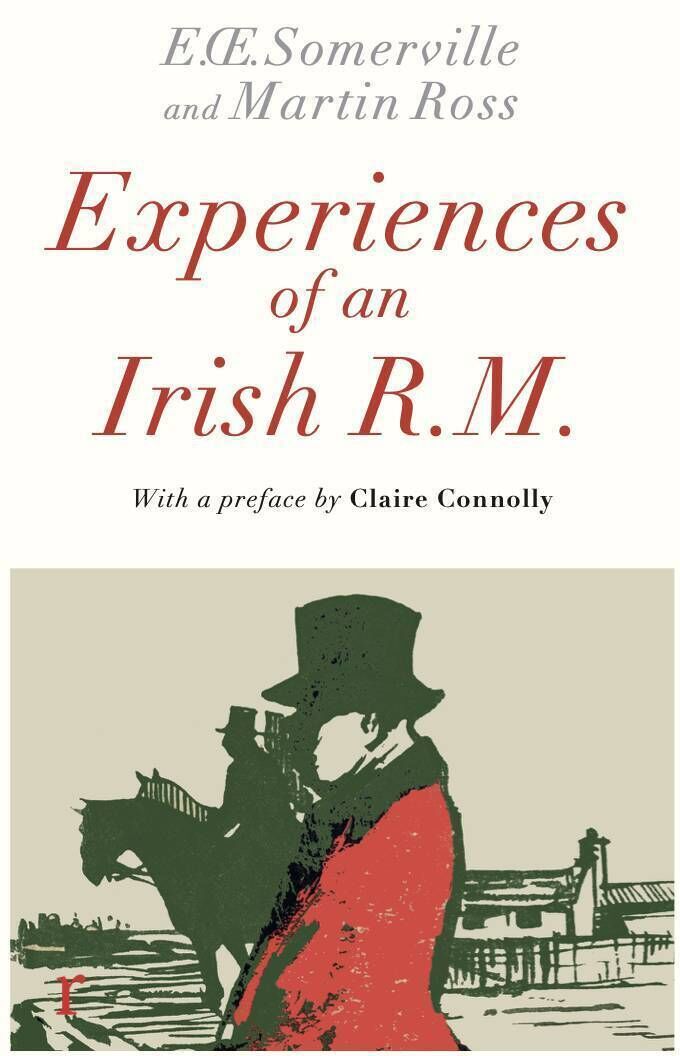Books: Work of Somervile and Ross back in the spotlight

Claire Connolly, Professor of English, UCC School of English, University College Cork. Picture: Clare Keogh
The work of authors Somervile and Ross is back in the spotlight with the release of new editions of their most famous books; Experiences Of An Irish R.M. and The Real Charlotte.
Their work will also be subject of a discussion by Professor of Modern English at UCC, Claire Connolly, and Dr Danielle O’Donovan at the West Cork Literary Festival, which commenced at the weekend.
Professor Connolly said it is fitting to see their work discussed at the event.
“Edith Somerville and Martin Ross (the pseudonym of Violet Martin) spent a lot of their lives in Castletownsend,” she says.
Professor Connolly has written the prefaces for the new editions of both novels and finds the character of Charlotte particularly fascinating.
“It’s a book about a single woman, whose age is ‘tough and forty’, and who is depicted as being hungry for land and property but also for men. She finds one man particularly attractive. He is already married but his eyes are on her 19-year-old cousin, Francie.”
Charlotte’s stage of life is worth noting, says the academic.
“People keep mistaking Charlotte for Francie’s aunt. She gets very cross about this. It really is a fantastic novel in terms of ugly feelings. You could even say it’s a novel about perimenopause.
“Charlotte is so hungry - and she remains vicious right until the end. It is amazing to see two women writers create such a woman character with such flair and panache.”
Highlighting that The Real Charlotte is often regarded as the greatest of 19th-century Irish novels, Professor Connolly sees a link between it and the novels of contemporary Irish women writers.
“The frankness with which contemporary Irish women write about sexual desire is something Somerville and Ross could only envy, but their interests run along similar lines,” she says.
One of their most favoured topics is the precarity of women’s lives – and how sex is often wrapped up or entangled in property, Connolly explains.
“They are interested in what happens to people who don’t have property. Society’s urge towards marriage and property is still strong of course. Their work considers the person left out in the cold, how one becomes institutionalised, and what society does with people for whom they can’t find a place. This is historically resonant but also relates to current realities in Ireland.”
With our housing crisis showing no signs of abating, Professor Connolly’s students are reacting as you might expect – with interest and empathy.
“It was because I wanted to teach the books to students that I first decided to write the prefaces. The response has been positive, with many choosing to answer on it for their exams.”
“Students certainly respond to the crossing lines of the desire for land or property and sex – how those lines so often get tangled up.
“Interestingly, for Charlotte, it is not about buying a house, but the desire for rented property, a better tenancy. She is both a tenant and a landlord. She punches down on people below her socially, yet she is also socially inferior to the Anglo-Irish landlords. There is a lot in that to explore and towards which many students relate.
“It’s not dissimilar to a Sally Rooney novel or a millennial Irish plot in that sense,” she says.
The relationship between locals and their Anglo-Irish neighbours is the focus of the second novel, Experiences of an Irish R.M.
Published in 1928, it was adapted as a television series in the 1980s.
“Somerville and Ross were writing this around the time the Anglo-Irish and their privilege were about to be swept away, so it also looks at people in positions of insecurity,” says Professor Connolly

“Anglo-Irish themselves, they knew the social hierarchy and were snobbish in their own way, but they observed and listened to the locals with great interest and, with respect.”
In this novel, Mr Yates, an uptight Brit, is the outsider, even if he is privileged.
“The local Irish run rings around him, outwitting him, and really, they are much cleverer than him. The humour derives from the poor reach law had in the West of Ireland.”
Somerville and Ross lived among the ordinary people, the Cork academic explains, at a social remove, but in and out of the same houses.
“They were interested in voice, not just accent; their interest was in Hiberno-English. We see an upper-class pair looking down on the peasantry, yes, but they are laughing with the Irish, not at them.”
They were not bland in their commentary either.
“They were effectively Unionist. When they talked about going to town, they meant London, and they laughed when people called Skibbereen ‘town’ – and yet they are constantly watching, thinking, and listening; they were brilliant observers. Ireland was changing in front of them, and they were writing through that time. They published in magazines and could sense, every week, the prospect of violent resistance against the British.”
Both writers are buried in Castletownsend. Although members of a very privileged world, they could never inherit their family homes or estates, but worked tirelessly to fund, protect and preserve them.
Ross was the first to die, whilst Somerville lived through the early years of the Free State.
“Even after Ross died, Somerville continued to write in their joint names. She channelled Ross’ voice through various mediums. Like Yeats and a lot of Anglo-Irish people, Somerville turned to spiritualism, seeing her social power shifting.”
Professor Connolly is a big advocate for 19th-century Irish literature, and most especially for these two writers.
“These books provide a completely absorbing read; they are short, snappy and funny, and they capture the humour of the people described.”
She is the author of a new book on Irish Romanticism coming out with Cambridge University Press this winter. “I am drawn to that time, the energy of it, the sense of experiment. Writers were finding a way in the English language to register the richness of Irish life on the printed page for the first time – there is great tension and conflict in that.”







 App?
App?


